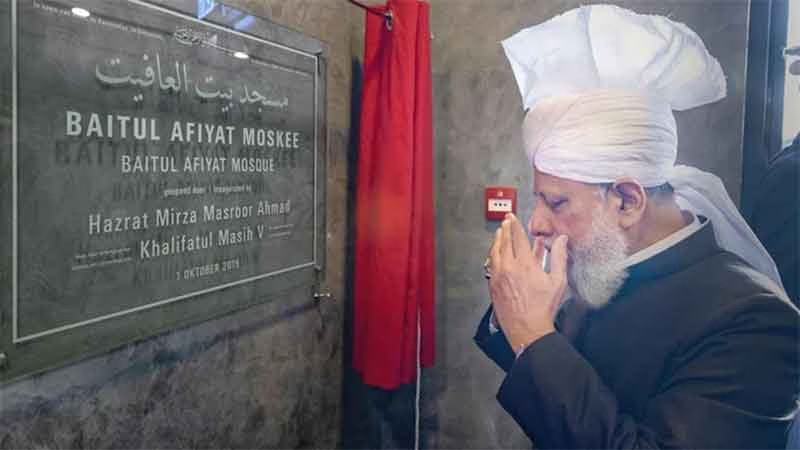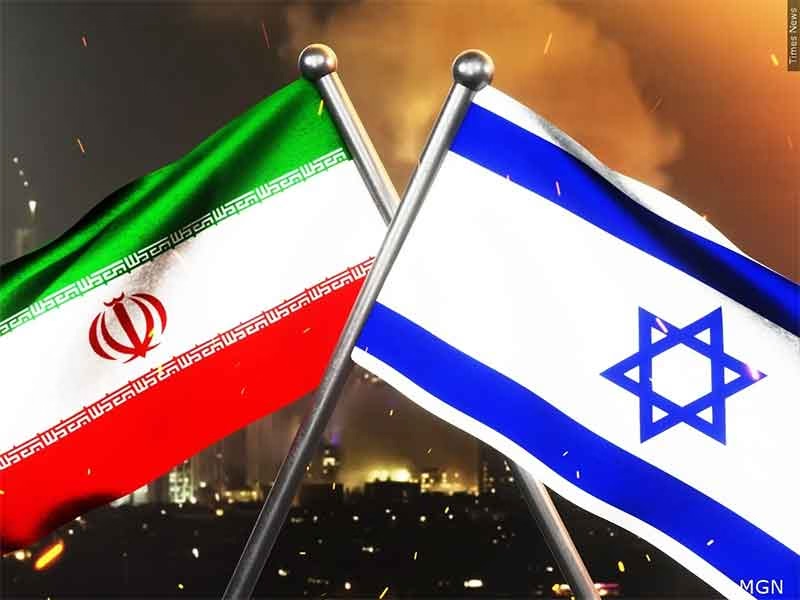
Introduction
In the Islamic Republic of Pakistan, a nation founded on the promise of religious freedom and protection for minorities, one community has persistently borne the brunt of systemic persecution: the Ahmadis. Officially declared non-Muslims in 1974 and further ostracized by harsh constitutional and legal amendments, the Ahmadiyya community has been subjected to decades of social exclusion, legal discrimination, mob violence, and state-sanctioned suppression. Their plight represents a grim chapter in Pakistan’s complex relationship with religious pluralism, majoritarian politics, and the politicization of faith.
Origins of the Ahmadiyya Movement
The Ahmadiyya movement was founded in 1889 by Mirza Ghulam Ahmad in Qadian (then British India, now in India’s Punjab state). Ahmadis consider Ghulam Ahmad to be the promised messiah and mahdi — a reformer within Islam — but do not believe him to be a law-bearing prophet. However, the mainstream Sunni and Shia Muslim communities view any such claim as blasphemous, maintaining that Muhammad is the final prophet. This theological dispute, though deeply doctrinal, became a flashpoint for political marginalization once Pakistan was formed.
The 1953 Lahore Riots: A Turning Point
The persecution of Ahmadis in Pakistan began not with the creation of the state in 1947, but with a growing movement among Islamist groups such as Majlis-e-Ahrar and Jamaat-e-Islami that sought to define Pakistan as an explicitly Sunni Muslim state. Tensions erupted in 1953 when widespread anti-Ahmadi riots broke out in Lahore, leading to dozens of deaths and the imposition of martial law. The government responded by establishing the Munir Commission, which famously concluded that defining a “true Muslim” was impossible without excluding others. Despite the commission’s warnings, the seeds of exclusion had been sown.
Constitutional Exclusion: The Second Amendment (1974)
The real institutional blow came in 1974 under the leadership of Prime Minister Zulfikar Ali Bhutto. Following student-led anti-Ahmadi demonstrations and pressure from Islamist parties, the Pakistani Parliament amended the Constitution to declare Ahmadis as non-Muslims. This Second Amendment was celebrated by religious hardliners and marked a turning point: a shift from social discrimination to formal legal marginalization. This constitutional amendment did not merely exclude Ahmadis from the Muslim identity — it legitimized their exclusion and emboldened further state-sponsored restrictions.
Ordinance XX and the Legal Ghettoization of Ahmadis
The military regime of General Zia-ul-Haq took anti-Ahmadi policies to new heights. In 1984, he promulgated Ordinance XX, which criminalized Ahmadi religious practices. Under this law, Ahmadis were prohibited from referring to themselves as Muslims, calling their places of worship “mosques,” using Islamic greetings (e.g., “As-salamu Alaikum”), or preaching and propagating their faith. Violations could lead to imprisonment for up to three years. Effectively, this law forced Ahmadis into a religious ghetto, where practicing their faith in any recognizable form was a crime.
Even their right to vote was segregated. Ahmadis were placed on a separate electoral roll, requiring them to renounce Mirza Ghulam Ahmad to qualify for voting as Muslims. Most refused, resulting in practical disenfranchisement.
According to the 2023 Pakistani census, Ahmadis constitute approximately 0.07% of the national population — around 162,000 individuals. However, Ahmadi sources estimate their numbers to be between 400,000 and 600,000, with some claiming as many as four million Ahmadis may reside in the country, many unregistered due to fear of persecution.
Violence, Intimidation, and Impunity
The legal discrimination paved the way for unchecked societal violence. Mosques belonging to the Ahmadiyya community have been attacked, desecrated, or forcibly seized. Cemeteries have been vandalized. Ahmadi publications are banned, and any attempt to distribute religious literature is prosecuted under anti-blasphemy laws.
Some of the most notorious incidents include the Lahore mosque attacks in May 2010, when two Ahmadi mosques in Lahore were attacked by Taliban-affiliated militants, killing 86 worshippers and injuring over 100. Targeted killings have become frequent, with over 250 Ahmadis murdered in targeted attacks since 1984, according to Ahmadi sources. Grave desecrations have become routine, with authorities destroying Ahmadi gravestones inscribed with Quranic verses, claiming such inscriptions are “exclusive” to Muslims.
Recent incidents underscore the continued vulnerability of the community. On April 18, 2025, in Karachi, an Ahmadi man named Laeeq Cheema was allegedly beaten to death by a mob of Islamists near an Ahmadi place of worship. Just a week later, on April 25, gunmen attacked members of the Ahmadi community in Bhulair, Punjab, killing Muhammad Asif and injuring another.
Perpetrators of these attacks are rarely arrested or prosecuted. When community members seek police protection, they are often met with indifference or accused of blasphemy themselves.
Social Ostracism and Economic Marginalization
Beyond legal and physical violence, Ahmadis face intense social exclusion. They are often denied admission to universities, jobs in government, and opportunities in business unless they hide or renounce their faith. Teachers have been dismissed, doctors boycotted, and businesses destroyed through coordinated campaigns of hate.
In rural Punjab and Sindh, mobs often force entire Ahmadi families to flee their homes, taking over property with tacit approval from local authorities. In cities, they are shunned from professional circles and vilified in the media. The Pakistani media, especially Urdu-language outlets, has played a troubling role by amplifying anti-Ahmadi rhetoric, labeling them as “agents of the West,” “traitors,” or even “enemies of Islam.” Religious television preachers have repeatedly issued open threats or incited violence against them with impunity.
Exile, Asylum, and Diaspora
Given the severity of the persecution, many Ahmadis have fled Pakistan in search of asylum. Countries like the United Kingdom, Canada, Germany, and the United States host thousands of Ahmadi refugees. In 2019, UNHCR categorized Pakistani Ahmadis as a “religious group at risk,” reinforcing their legitimate claim to refugee protection.
Yet, even in exile, Ahmadis face challenges. In some cases, Pakistani embassies abroad have reportedly monitored or harassed Ahmadi activists. Furthermore, Islamist groups in the diaspora have sought to export anti-Ahmadi sentiment into Western communities.
International Reactions and the Silence of the Pakistani State
Human rights organizations such as Amnesty International, Human Rights Watch, and the U.S. Commission on International Religious Freedom (USCIRF) have consistently highlighted the persecution of Ahmadis as a violation of basic human rights and religious freedom. The European Union has also raised concerns about Pakistan’s treatment of Ahmadis, sometimes linking it to trade and aid negotiations.
However, the Pakistani state has largely ignored such criticism. Politicians across the spectrum, including secular parties, are reluctant to defend Ahmadis for fear of backlash. Even in cases of outright violence, official statements are rare, and sympathy is muted. The state’s policy has, at best, been one of studied silence — and at worst, complicity.
The Blasphemy Law Nexus
Pakistan’s blasphemy laws — especially Section 295-C of the Pakistan Penal Code — disproportionately affect Ahmadis. Accusations of blasphemy are often leveled with little evidence and are used as a tool of personal vengeance or communal harassment. Dozens of Ahmadis have been charged or imprisoned under these laws, and even those acquitted by courts often remain in hiding or are forced to flee the country. In a society where blasphemy accusations can lead to lynchings, mere suspicion of being an Ahmadi is enough to endanger one’s life.
A Bleak Future?
The future for Ahmadis in Pakistan appears uncertain. There is no political will to revisit the Second Amendment or Ordinance XX. On the contrary, public sentiment remains largely hostile, and any political figure attempting to speak out risks their career — or life. The case of Punjab Governor Salman Taseer, who was assassinated in 2011 for defending a Christian woman accused of blasphemy, has cast a long shadow.
At present, there is no major political party advocating for Ahmadi rights. The military remains indifferent, and the judiciary has often sided with hardliners. Civil society, while occasionally vocal, is largely silenced by fear.
Subscribe to Our Newsletter
Get the latest CounterCurrents updates delivered straight to your inbox.
Conclusion
The persecution of Ahmadis in Pakistan is not just a minority rights issue — it is a litmus test for the country’s commitment to human dignity, religious freedom, and constitutional justice. It reflects a society where faith has been weaponized, where the boundaries of citizenship are policed by theocrats, and where silence equals survival. Until Pakistan reckons with its own laws and the narratives that support them, the Ahmadiyya community will continue to live as second-class citizens — punished not for crimes, but for belief.
Ashish Singh has finished his Ph.D. coursework in political science from the NRU-HSE, Moscow, Russia. He has previously studied at Oslo Metropolitan University, Norway; and TISS, Mumbai.














































